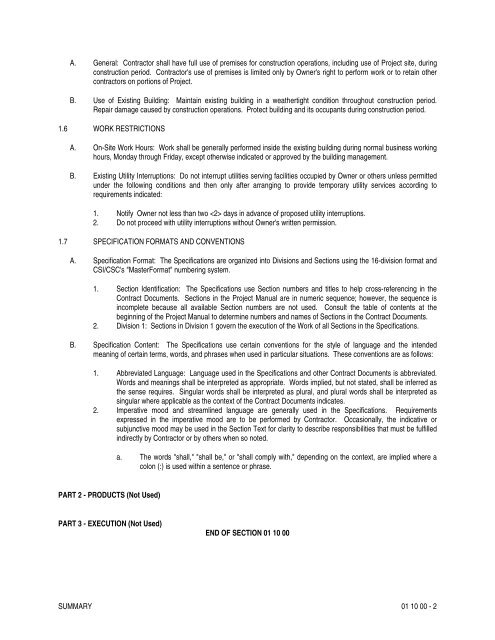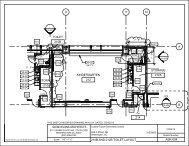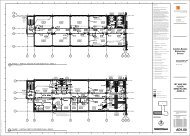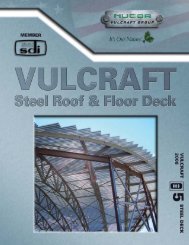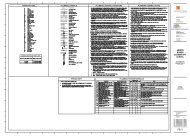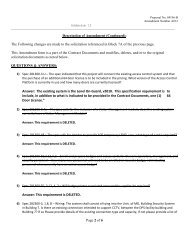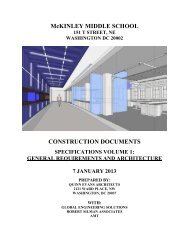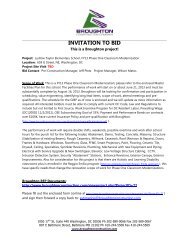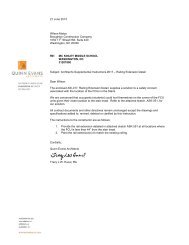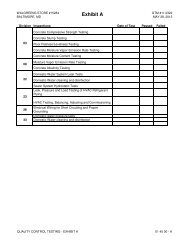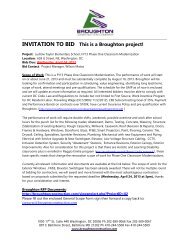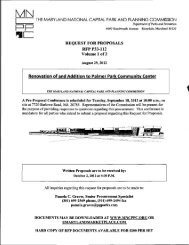DSLBD Office Fit Out - Broughton Construction Company
DSLBD Office Fit Out - Broughton Construction Company
DSLBD Office Fit Out - Broughton Construction Company
You also want an ePaper? Increase the reach of your titles
YUMPU automatically turns print PDFs into web optimized ePapers that Google loves.
A. General: Contractor shall have full use of premises for construction operations, including use of Project site, during<br />
construction period. Contractor's use of premises is limited only by Owner's right to perform work or to retain other<br />
contractors on portions of Project.<br />
B. Use of Existing Building: Maintain existing building in a weathertight condition throughout construction period.<br />
Repair damage caused by construction operations. Protect building and its occupants during construction period.<br />
1.6 WORK RESTRICTIONS<br />
A. On-Site Work Hours: Work shall be generally performed inside the existing building during normal business working<br />
hours, Monday through Friday, except otherwise indicated or approved by the building management.<br />
B. Existing Utility Interruptions: Do not interrupt utilities serving facilities occupied by Owner or others unless permitted<br />
under the following conditions and then only after arranging to provide temporary utility services according to<br />
requirements indicated:<br />
1. Notify Owner not less than two days in advance of proposed utility interruptions.<br />
2. Do not proceed with utility interruptions without Owner's written permission.<br />
1.7 SPECIFICATION FORMATS AND CONVENTIONS<br />
A. Specification Format: The Specifications are organized into Divisions and Sections using the 16-division format and<br />
CSI/CSC's "MasterFormat" numbering system.<br />
1. Section Identification: The Specifications use Section numbers and titles to help cross-referencing in the<br />
Contract Documents. Sections in the Project Manual are in numeric sequence; however, the sequence is<br />
incomplete because all available Section numbers are not used. Consult the table of contents at the<br />
beginning of the Project Manual to determine numbers and names of Sections in the Contract Documents.<br />
2. Division 1: Sections in Division 1 govern the execution of the Work of all Sections in the Specifications.<br />
B. Specification Content: The Specifications use certain conventions for the style of language and the intended<br />
meaning of certain terms, words, and phrases when used in particular situations. These conventions are as follows:<br />
1. Abbreviated Language: Language used in the Specifications and other Contract Documents is abbreviated.<br />
Words and meanings shall be interpreted as appropriate. Words implied, but not stated, shall be inferred as<br />
the sense requires. Singular words shall be interpreted as plural, and plural words shall be interpreted as<br />
singular where applicable as the context of the Contract Documents indicates.<br />
2. Imperative mood and streamlined language are generally used in the Specifications. Requirements<br />
expressed in the imperative mood are to be performed by Contractor. Occasionally, the indicative or<br />
subjunctive mood may be used in the Section Text for clarity to describe responsibilities that must be fulfilled<br />
indirectly by Contractor or by others when so noted.<br />
a. The words "shall," "shall be," or "shall comply with," depending on the context, are implied where a<br />
colon (:) is used within a sentence or phrase.<br />
PART 2 - PRODUCTS (Not Used)<br />
PART 3 - EXECUTION (Not Used)<br />
END OF SECTION 01 10 00<br />
SUMMARY 01 10 00 - 2


